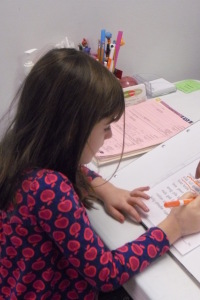How to Identify Vision Problems in Children
Children should be referred for a comprehensive eye exam whenever visual symptoms are noticed or if they are not achieving their potential. Many of these vision problems will not be detected during a school vision screening or limited vision assessment as part of a school physical or routine pediatric health evaluation.
In the video below, Dr. Beasley describes some of the most common signs of vision problems in children.
In addition to the regular signs and symptoms of vision problems, children may display other symptoms. Knowledge link
Child EYE DISORDERS and SYMPTOMS
Child Nearsightedness, Farsightedness, or Astigmatism
- Inability to see clearly in the distance or up close
- Complains of blurred vision
- Rubs eyes frequently
- Squints
Child Eye Coordination Problems
- Inability to coordinate the eyes together effectively
- Closes or covers one eye
- Occasionally sees double
- Rubs eyes frequently
- Able to read for only a short time
- Poor reading comprehension
Child Eye Focusing Problems
- Inability to easily refocus eyes or maintain clear focus
- Holds things very close
- Complains of blurred vision
- Poor reading comprehension
- Says eyes are tired
- Able to read for only a short time
- Has headaches when reading
Child Eye Tracking Problems
- Inadequate ability to smoothly and accurately move the eyes from one point to another
- Moves head excessively when reading
- Frequently loses place, skips lines when reading
- Uses finger to keep place
- Poor reading comprehension
- Short attention span
Child Faulty Visual Form Perception
- Inability to discriminate differences in size, shape or form
- Mistakes words with similar beginnings
- Difficulty recognizing letters, words, or simple shapes and forms
- Can’t distinguish the main idea from insignificant details
- Trouble learning basic math concepts of size, magnitude, and position
Child Faulty Visual Memory
- Inability to remember and understand what is seen
- Trouble visualizing what is read
- Poor reading comprehension
- Poor speller
- Trouble with mathematical concepts
- Poor recall of visually presented material
Child Faulty Visual Motor Integration
- Inability to process and reproduce visual images by writing or drawing
- Sloppy handwriting and drawing
- Can’t stay on lines
- Poor copying skills
- Can respond orally but not in writing
Child Difficulty with Laterality and Directionality
- Poor development of left/right awareness
- Trouble learning right and left
- Reverses letters and words
- Trouble writing and remembering letters and numbers

